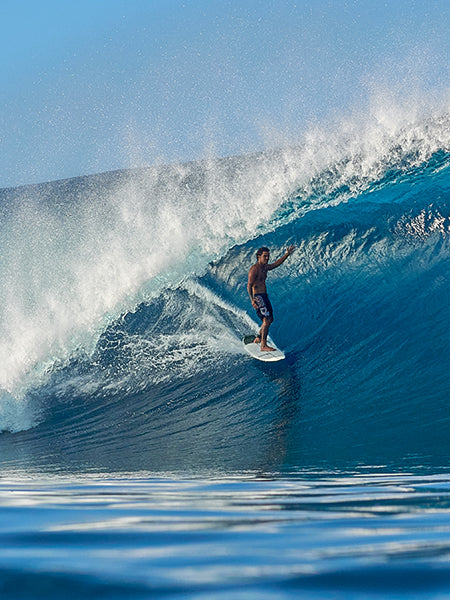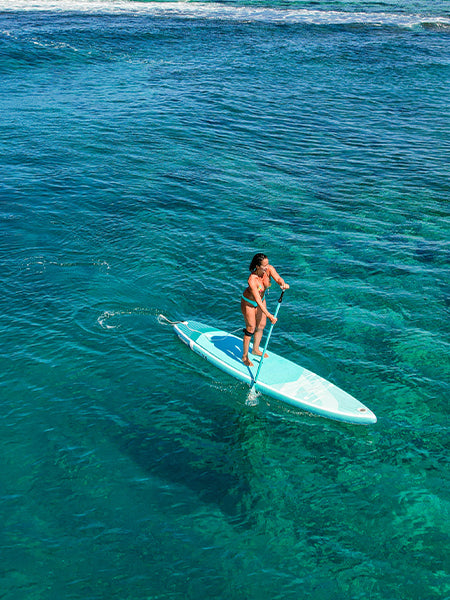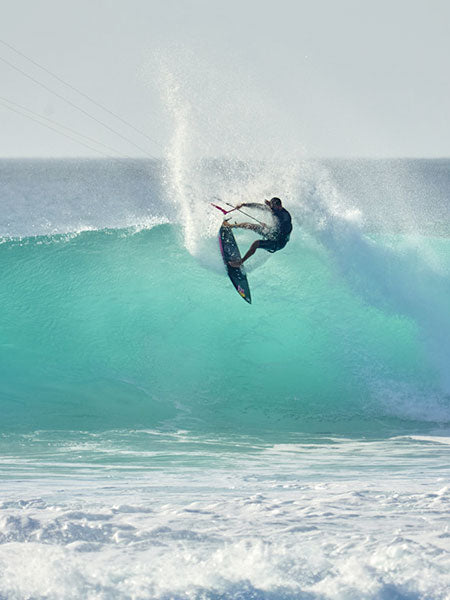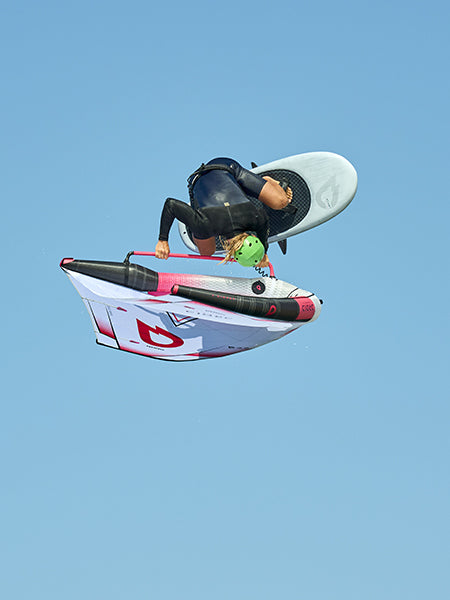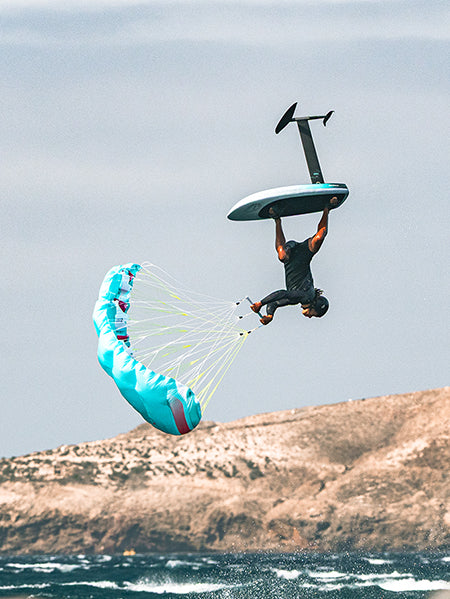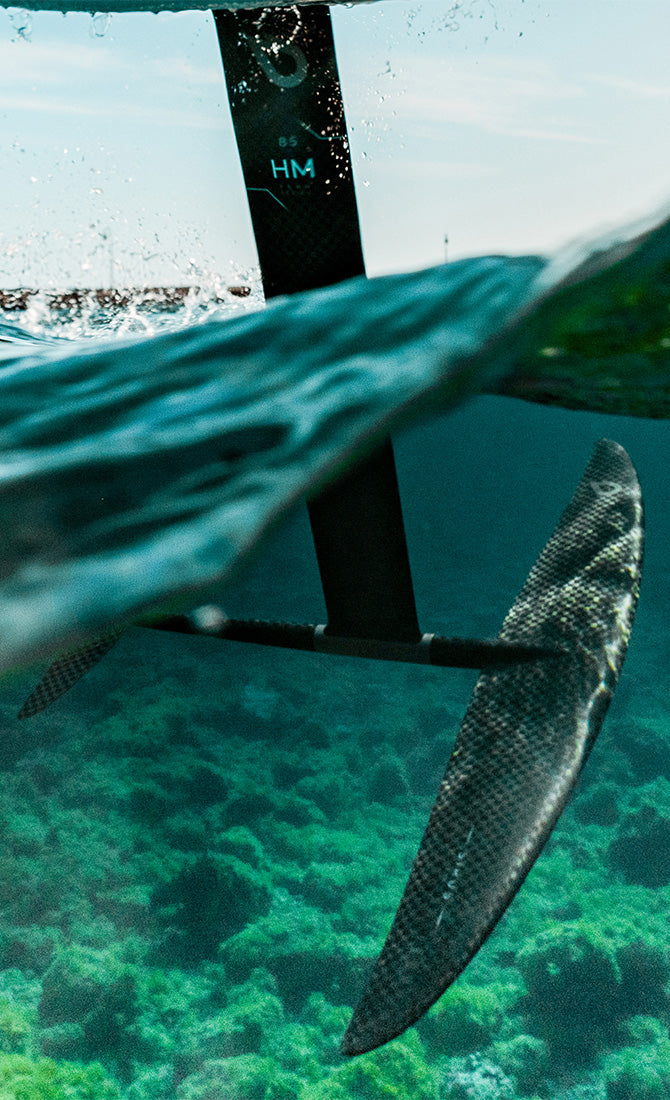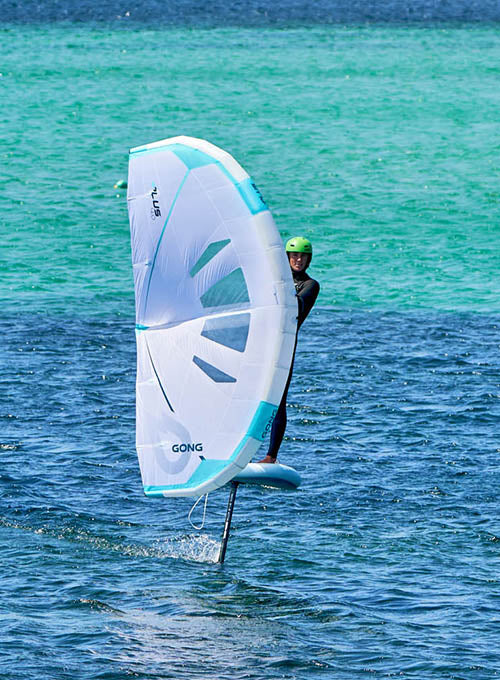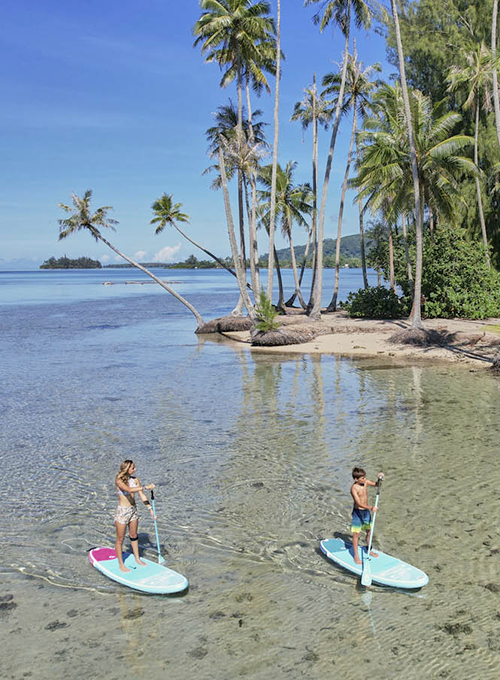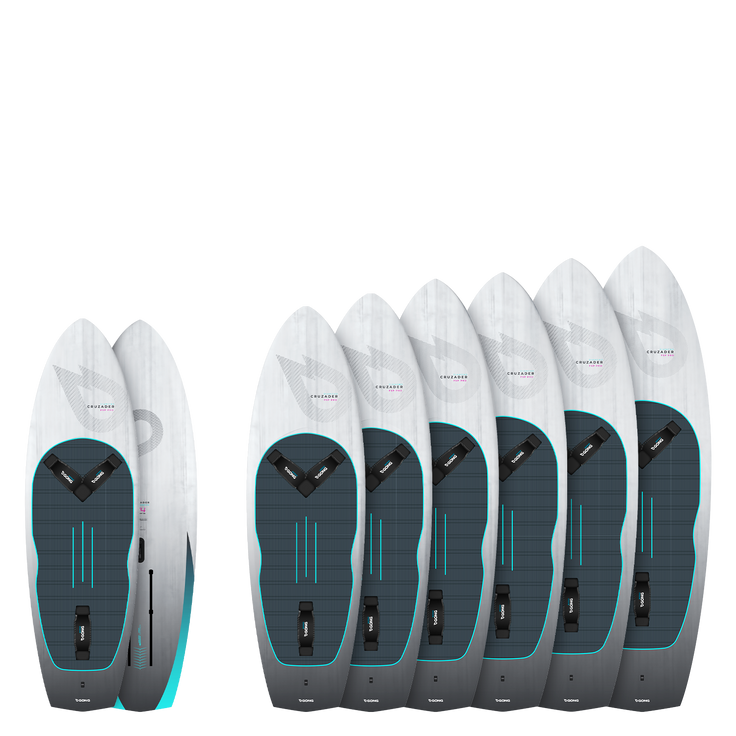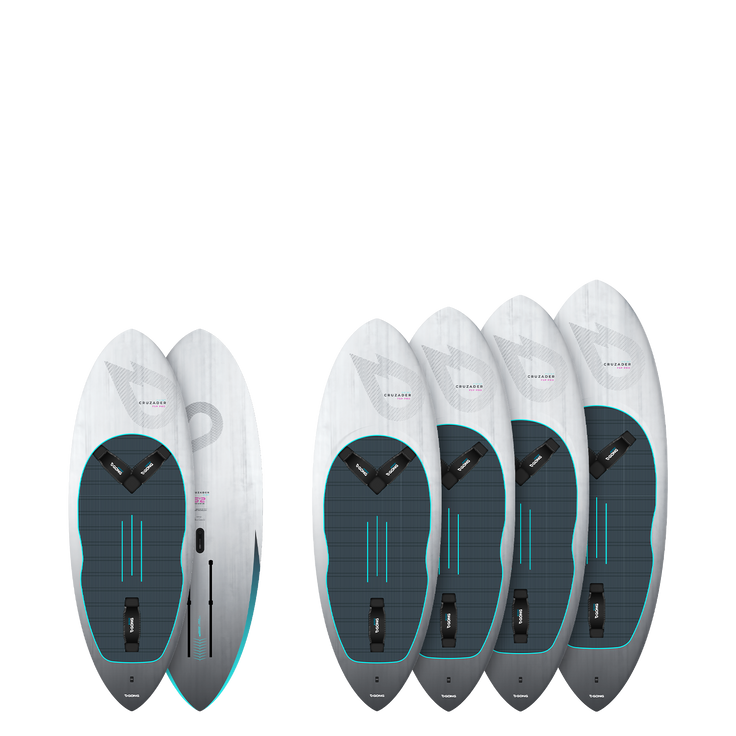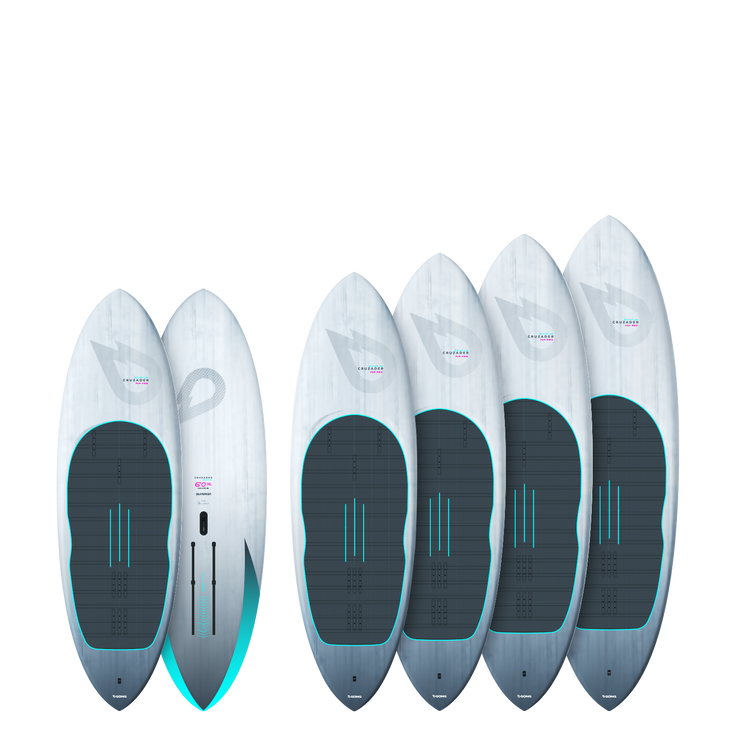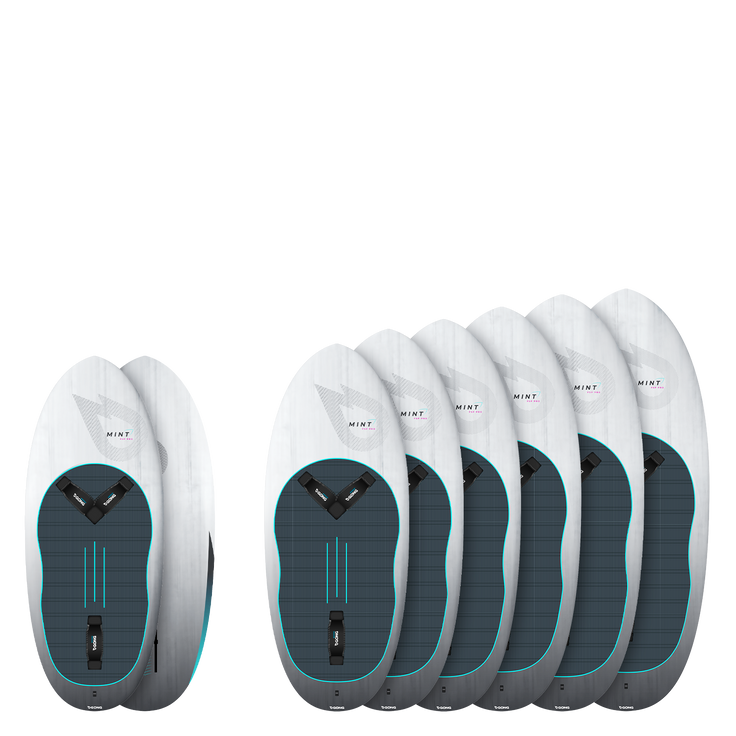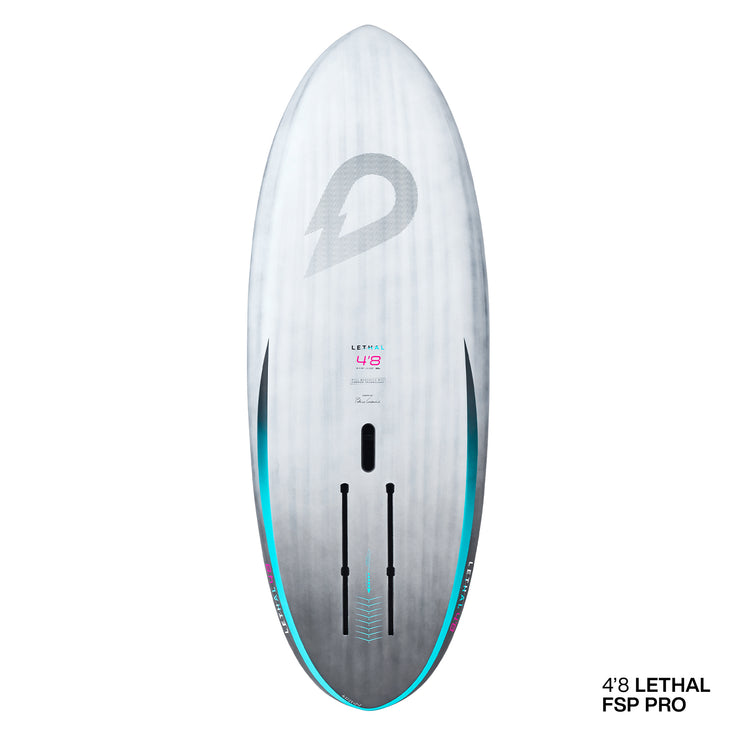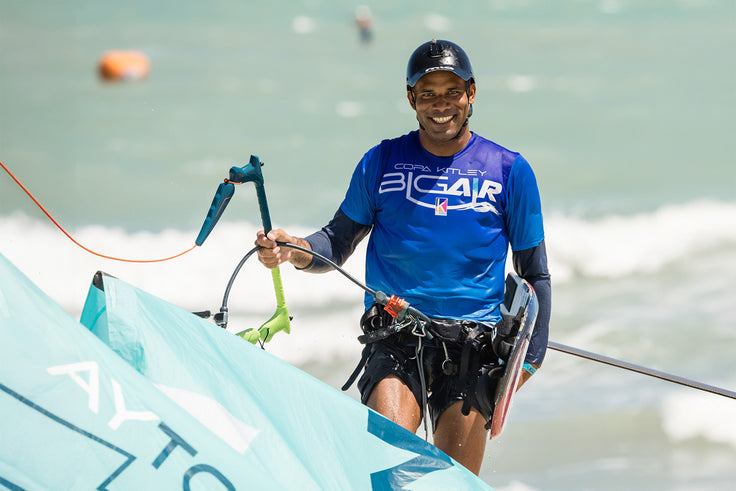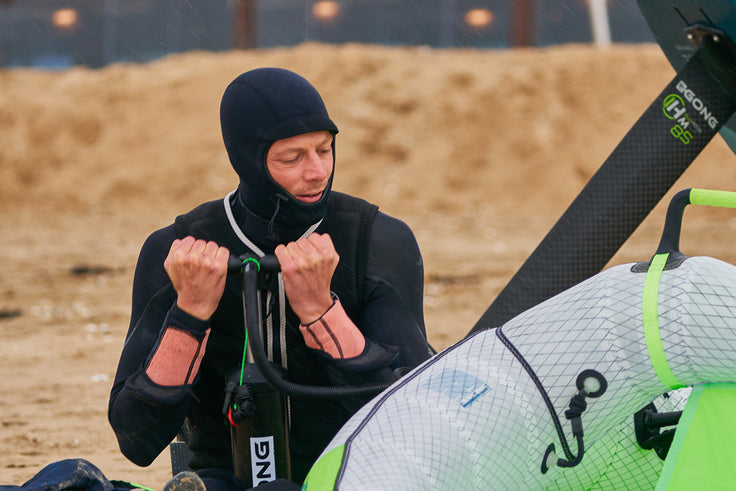GEAR: THE CONCEPT OF FLOW AS APPLIED TO A WING BOARD
- News
- Wing
In the unique blend of gliding and flying that defines wing foiling, the flow of your board is a key factor of your sensations and performance.
The concept of flow on a wing board (and more broadly in board sports) is central to describe the smooth gliding sensation of a moving board. Flow is to board sports what groove is to music. That moment when everything aligns perfectly to produce a state of grace, a connection between surfer and gear, musician and instrument. The wing foil board that will allow you to achieve this flow meets several criteria: volume distribution, scoop line, inertia, hull, glide and maneuverability.

Wing foiler: Bastien, GONG team rider, on a Cruzader Diamond FSP Pro with a Droid UPE Aramid X.
- Volume distribution and its impact on flow
- The distribution of volume across the length of the board plays a key role in the feeling of flow. A board with well-distributed volume, especially with a smooth transition between nose and tail, favors a fluid, natural glide. This allows the board to better “read” the water surface and react smoothly to the rider's movements and water variations.
- On the contrary, a more pronounced volume distribution, for example with a larger nose, may offer easier take off, but will slightly reduce the feeling of fluid glide, as the board will tend to brake during touchdowns..
- Scoop line and flow
- The board's scoop curve has a direct influence on flow. A harmonious scoop helps smooth transitions between the different phases of navigation (take off, flight, touchdowns) and maintains gliding speed.
- A scoop that's too flat may give more speed on the water, but will reduce flow on choppy water, making the board less forgiving of small surface irregularities. On the contrary, a scoop that's too pronounced can slow the board down, limiting its natural glide.
- Relation between flow and maneuverability
- Flow can sometimes be at odds with maneuverability. A very fluid board will often be less responsive in tight turns, as it favors stable glide over reactivity. On the contrary, a more compact board, even with less flow, will be more maneuverable and enable fast, tight transitions.
- It's all about finding the right balance between a board that maintains its fluid trajectory (flow) and one that can pivot and react to the rider's rapid movements.
- Flow and board inertia
- The inertia of the board, due to its length and weight distribution, also plays a role in the flow. A longer, heavier board will have more inertia, which can give a smooth, continuous gliding sensation, especially on smooth water. However, this also means it will be less responsive when it comes to changing direction quickly.
- Experienced riders often appreciate this inertia, as it allows them to maintain a stable trajectory in strong winds or longer waves.
- Hull and glide
- The design of the hull (concave, double concave, flat, etc.) has a direct influence on flow. A concave hull, for example, can “channel” the water under the board and promote a more stable, controlled glide, thus improving flow.
- On the contrary, a flat hull allows faster acceleration, but may be less pleasant to maintain a continuous glide over a long distance.
- Flow and gliding sensations
- Flow also refers to the sensations experienced when gliding on the water, particularly in the transition phases between flying on the foil and touching the water. A board with good flow makes it easier to go from gliding on the water to flying on the foil, without a sudden break in speed.
- It also depends on how the board reacts to the rider's small corrections of trajectory. A well-dosed flow allows subtle adaptation to variations in the water surface, offering a more pleasant and intuitive riding experience.
- Individual feeling and the importance of choosing the right shape
- Flow is very much a matter of personal preference. Some prefer a more “twirling” board, with a less pronounced flow but offering great responsiveness. Others prefer a board with a long, smooth glide, even at the cost of reduced maneuverability.
- So it's crucial to try out different shapes to find your own flow degree, the one that best suits your style and riding expectations.
-25%
2025
heart
heart-full
heart
heart-full
Wing Foil Board Cruzader Diamond FSP Pro
The glide of a downwind board with the qualities of a compact board.
Regular Price
749€
Sale Price
749€Regular Price
999€
-25%
2025
heart
heart-full
heart
heart-full
Wing Foil Board Cruzader Point FSP Pro
The surf and freefly board with the smoothest takeoff and drive ever.
Regular Price
749€
Sale Price
749€Regular Price
999€
-25%
2025
heart
heart-full
heart
heart-full
Wing Foil Board Cruzader Point LW FSP Pro
The ultimate light wind board.
Regular Price
819€
Sale Price
819€Regular Price
1099€
-26%
2025
heart
heart-full
heart
heart-full
Wing Foil Board Mint FSP Pro
A performance shape made accessible for a mix of freeriding and wave riding .
Regular Price
699€
Sale Price
699€Regular Price
949€
-26%
2025
heart
heart-full
heart
heart-full
Wing Foil Board Lemon FSP Pro
The best for surfing in a compact, efficient, and easy shape.
Regular Price
699€
Sale Price
699€Regular Price
949€
-26%
2025
heart
heart-full
heart
heart-full
Wing Foil Board Lethal FSP Pro
The ultimate board for wave riding.
Regular Price
699€
Sale Price
699€Regular Price
949€
-25%
2025
heart
heart-full
heart
heart-full
Wing Foil Board Stunt FSP Pro
The 100% Surf-Freestyle board.
Regular Price
669€
Sale Price
669€Regular Price
899€
